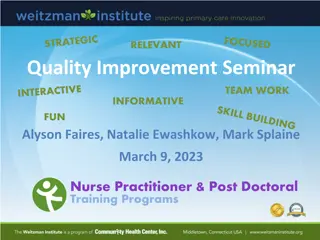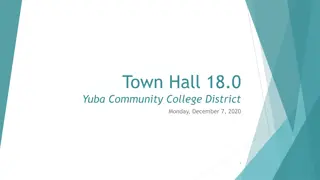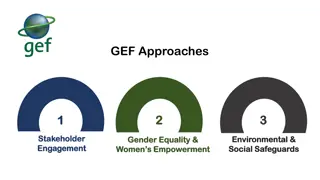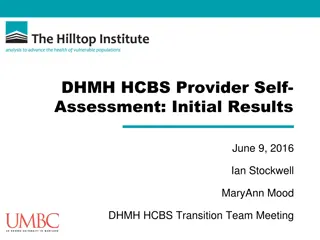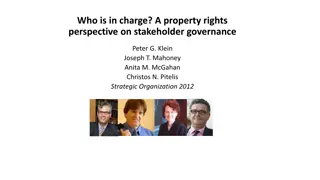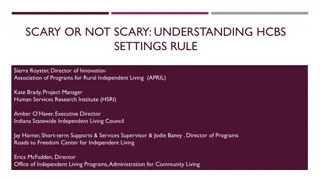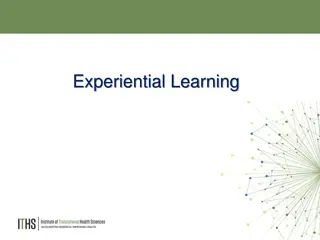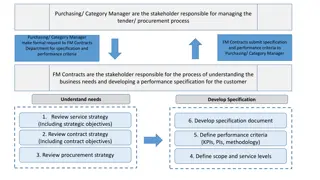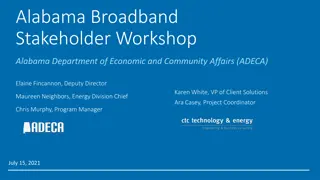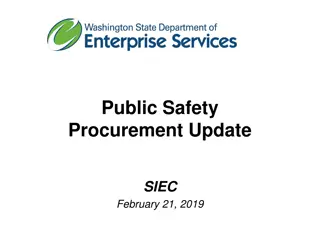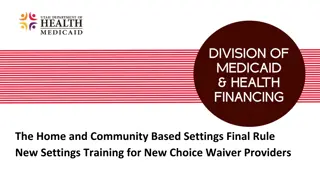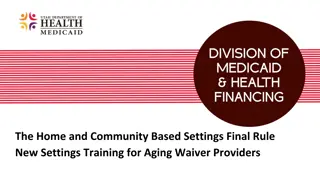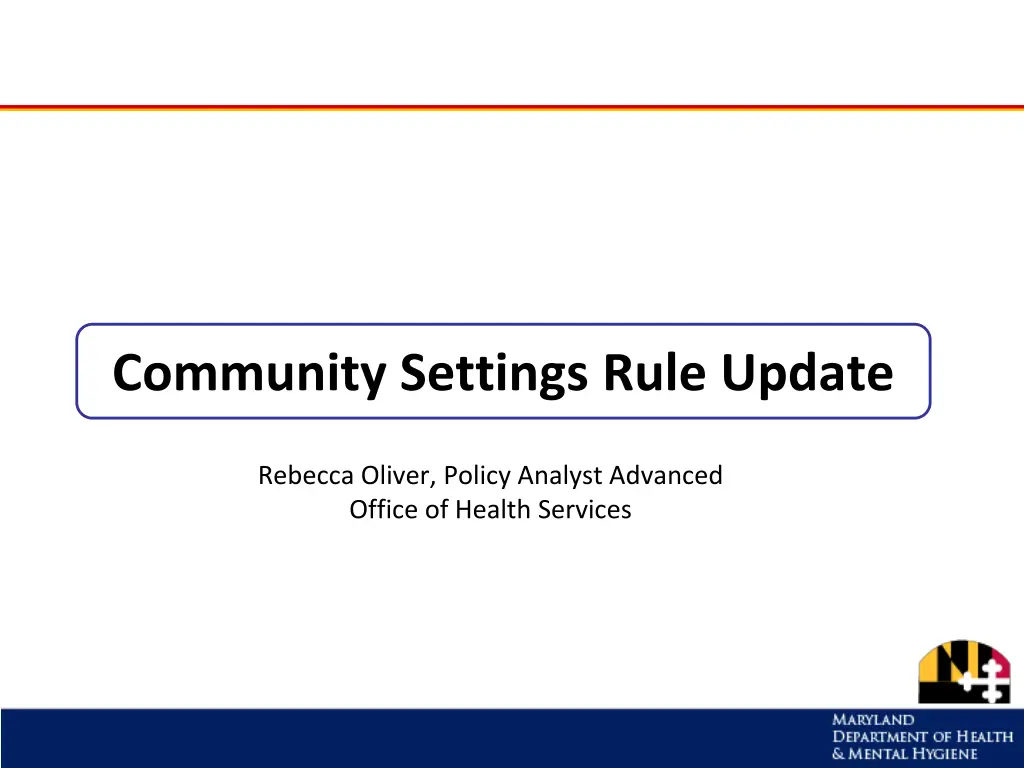
Update on Community Settings Rule by Office of Health Services
Explore the latest developments in the Community Settings Rule Update as issued by the Office of Health Services. Learn about compliance requirements, validation strategies, alternatives for non-compliant settings, ongoing monitoring, and provider survey analysis. Stay informed on how stakeholders are adapting to ensure adherence to federal regulations.
Download Presentation

Please find below an Image/Link to download the presentation.
The content on the website is provided AS IS for your information and personal use only. It may not be sold, licensed, or shared on other websites without obtaining consent from the author. If you encounter any issues during the download, it is possible that the publisher has removed the file from their server.
You are allowed to download the files provided on this website for personal or commercial use, subject to the condition that they are used lawfully. All files are the property of their respective owners.
The content on the website is provided AS IS for your information and personal use only. It may not be sold, licensed, or shared on other websites without obtaining consent from the author.
E N D
Presentation Transcript
Community Settings Rule Update Rebecca Oliver, Policy Analyst Advanced Office of Health Services
Background and Introduction Home and Community- Based Setting Final Rule CMS issued this final rule on January 16, 2014 It became effective on March 17, 2014 Full Compliance is required by March 2019 The final rule lists many items HCBS providers must comply with to receive Medicaid payment.
Community Settings Rule Update Validation Strategies Provider Surveys almost complete, working on data analysis Conduct Onsite Visits Planning now, starting this summer Obtain Consumer and Stakeholder Feedback/Reviews Implementing participant surveys Remediation Plan Sending providers letters explaining the regulation and providing feedback on which questions they indicated noncompliance on Corrective Actions Plan to be proposed by providers based on the letter 3
Community Settings Rule Update Alternatives For Individuals Impacted By Settings That Do Not/ Will Not Comply With Rule Participants Must Be: Provided With Reasonable Notice & Due Process Given Opportunity, Information And Supports To Make Informed Choice Of Alternate Settings State Must Ensure: Critical Services And Supports Are In Place For Participants Prior To Transition 4
Community Settings Rule Update Ongoing Monitoring & Quality Assurance Working site visits/ assessments into revalidation processes for all programs STP updates to go out for public comments around July 31 STP is currently on our website 5
Provider Survey Analysis Analysis is based on 865 provider survey questionnaires Separated into four categories Group 1: These sites have failed 0 -4 questions. DHMH considers these sites to be mostly in compliance with federal regulations, though minor changes may be necessary. Group 2: These sites have failed 5-10 questions. DHMH recommends these sites make minor changes to become compliant with the federal regulations. Group 3: These sites have failed 11-15 questions. DHMH recommends these sites make major changes to become compliant with the federal regulations. Group 4 : These sites have failed 16+ questions. DHMH recommends these sites work with DHMH to overhaul their programs to become compliant with federal regulations. *This is preliminary analysis and will be updated as needed, based on Hilltop s additional data 6
Group 1 Pass Fail Questions Do participants control their own funds? (i.e., participants have their own checking or savings account that they manage.) 212 87 In a one-month time frame, on average, how frequently do participants receive services in non-disability specific settings (based on availability in the community)? (e.g., are participants offered the chance to participate in activities at a local YMCA or volunteer in the community at a local animal shelter?) 227 72 Is the site near (i.e., within 1/4 mile of) other sites that YOUR provider organization operates for people receiving home and community-based (HCB) waiver services? 241 58 250 Do participants have keys to their entrance door (i.e., the front door)? 49 Do participants have unrestricted access to public areas at the site? (i.e., there are no restrictive devices such as gates or locked doors prohibiting them from areas that are open to the public.) 251 48 There are 299 sites that have failed 0-4 questions on the survey. This accounts for 34% of the total sites. 7
Group 2 Pass Fail Questions 124 Do participants have keys to their entrance door (i.e., the front door)? 290 134 Do participants have keys to their bedroom doors? 280 Do participants control their own funds? (i.e., participants have their own checking or savings account that they manage.) 163 251 In a one-month time frame, on average, how frequently do participants receive services in non-disability specific settings (based on availability in the community)? (e.g., are participants offered the chance to participate in activities at a local YMCA or volunteer in the community at a local animal shelter?) 191 223 Does the site have physically accessible laundry facilities (i.e., clothes washer or dryer) for participants to use? 260 154 There are 414 sites that have failed 5-10 questions on the survey. This accounts for 47% of the total sites. 8
Group 3 Questions Pass Fail 6 Do participants have keys to their entrance door (i.e., the front door)? 133 11 Do participants have keys to their bedroom doors? 128 Do participants control their own funds? (i.e., participants have their own checking or savings account that they manage.) 29 110 In a one-month time frame, on average, how frequently do participants receive services in non-disability specific settings (based on availability in the community)? (e.g., are participants offered the chance to participate in activities at a local YMCA or volunteer in the community at a local animal shelter?) 33 106 43 Do participants have lockable bedroom doors? 96 There are 139 sites that have failed 11-15 questions on the survey. This accounts for 16% of the total sites. 9
Group 4 Questions Pass Fail 0 Do participants have keys to their entrance door (i.e., the front door)? 23 1 Do participants have keys to their bedroom doors? 22 Do participants control their own funds? (i.e., participants have their own checking or savings account that they manage.) 1 22 In a one-month time frame, on average, how frequently do participants receive services in non-disability specific settings (based on availability in the community)? (e.g., are participants offered the chance to participate in activities at a local YMCA or volunteer in the community at a local animal shelter?) 4 19 If participants are sharing bedrooms, were they and/or their legal representatives given a choice of their roommate(s)? 6 17 There are 23 sites that have failed 16 + questions on the survey. This accounts for 3% of the total sites. 10

